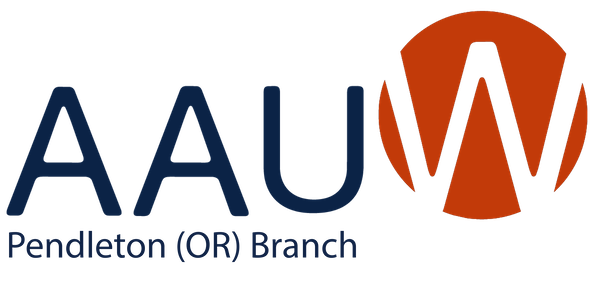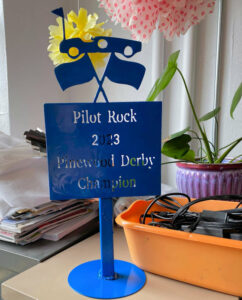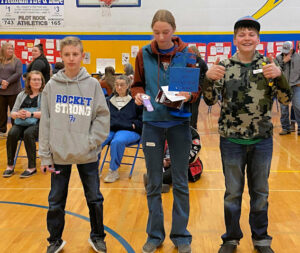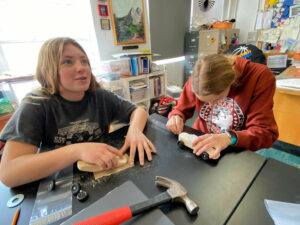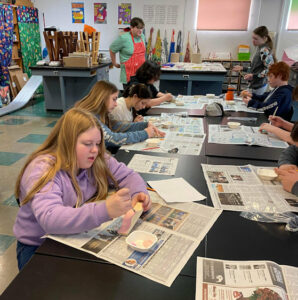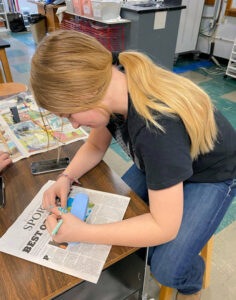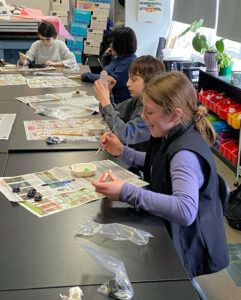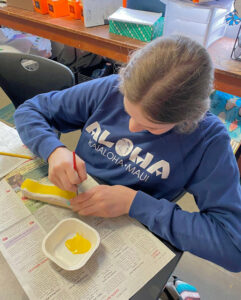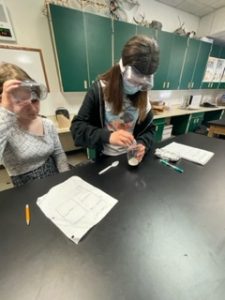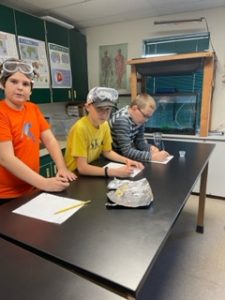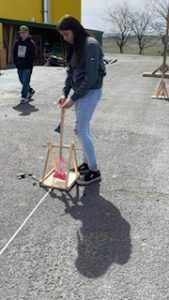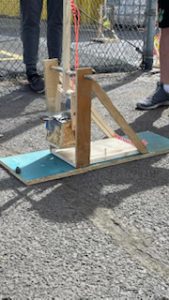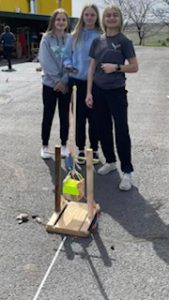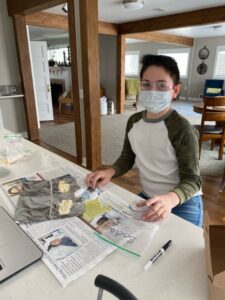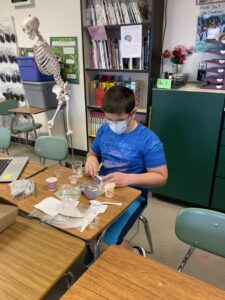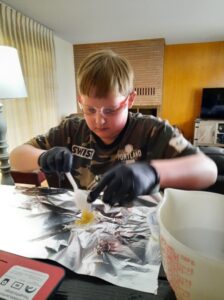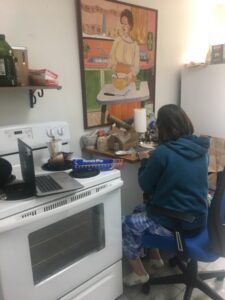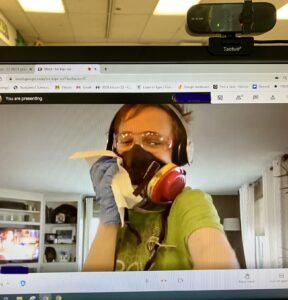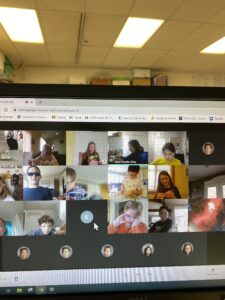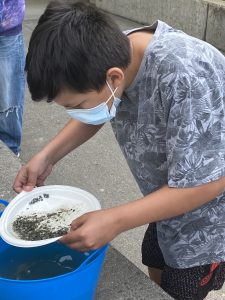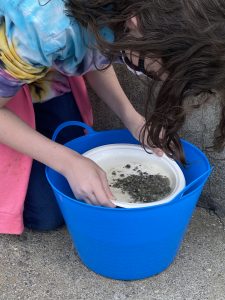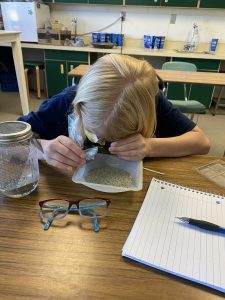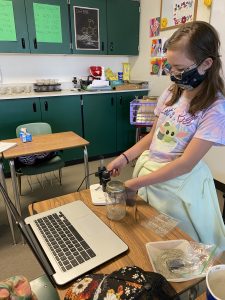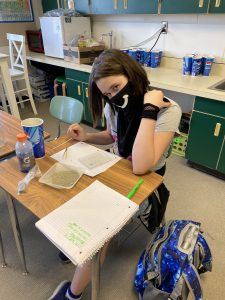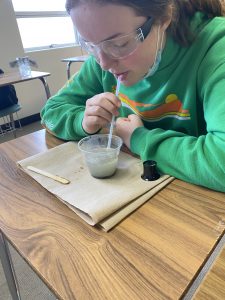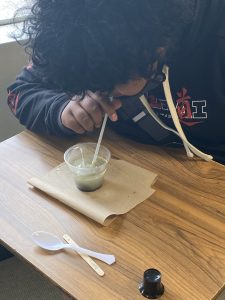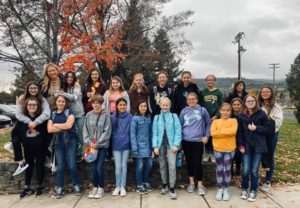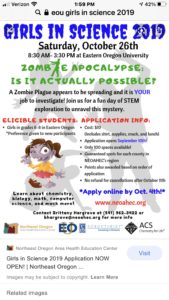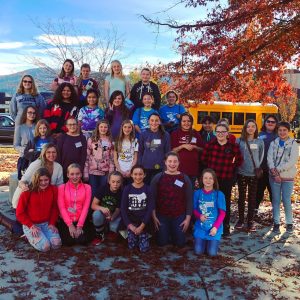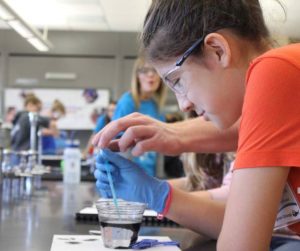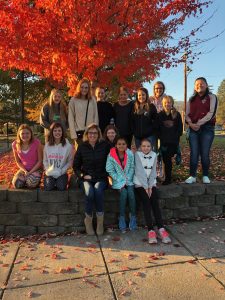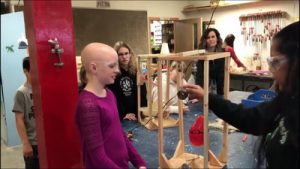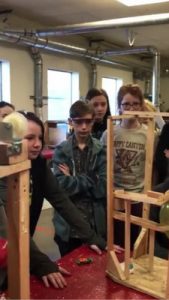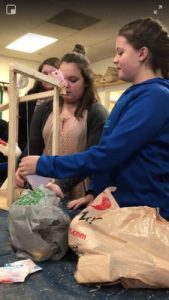STEM 2025-2026
Miriam Munck reported that Pendleton Branch provided $200 for registration and also transportation costs for 40 Pendleton middle-school students to attend the Investigators of Science institute in La Grande on October 25. The institute is an annual program by the Northeast Oregon Area Health Education Center (NEOAHEC) that Pendleton Branch has supported in past years. The teachers with the students said the experience was excellent, as usual.
STEM 2022-2023
December 2023 report from Miriam Munck
Our AAUW branch sponsored 50 students to attend Investigators of Science on November. 4. The day camp is presented by North East Oregon Area Health Education Center (NEOAHEC) and Eastern Oregon University (EOU). Our $10/student sponsorship included the camp activities, lunch, and a T-shirt. Forty students from Sunridge Middle School, nine from Pilot Rock Middle School, and one from Weston-Athena Middle made up the group. AAUW also paid for bus transportation for the Sunridge Middle School students.
2023 – Here are photos from the Pilot Rock Middle School STEM project. The students designed, built, tested, redesigned, and raced pinewood cars. The teacher, Lela Thieme, shared ‘what I learned’ statements from the students.
STEM funds recipient Goal #1: Expand the number of students who ultimately pursue advanced degrees and careers in STEM fields and broaden the participation of women and minorities in the workforce.
Lela Thieme: This cannot be evaluated at this point since the students are only 7th and 8th graders. However, we did have 28 girls out of 59 students participate, and 55 of the 59 students showed up to the academic fair with their families. Twenty-seven of the 28 girls attended the event!
Goal #2: Increase STEM literacy for all students, including those who do not pursue STEM-related careers or additional study in STEM disciplines.
- ”I think that this project relates to STEM because your engineering a car and you have to think about the science of how the car works and the arodymaincs of the car and how it affects the car.” Jadian H.
- ”engineering and science because you had to engineer your car and the science is what helped you figue out how the velocity and speed and air restince would help the car win.” Trevor R.
- ”I think this project relates to STEM because you use engineering to make the car and find the right amount of weight, technology, looking up designs on Chromebooks, mathematics, to figure out how much weight to have, science, for the friction on the track and wheels.” Abigail J.
- ”We used science by learning about arrow dynamics. We used our Chrome Books to look up designs for our cars. We used engineering by making sure there was the perfect amount of weights on our cars. We used mathematics by testing our cars on the speed and all that stuff.” Lydia H.
- ”The derby car project was related to STEM because we needed to use science to find out what makes a car slow and how to prevent it. Engineering came in when we needed to design and color the car. Mathematics came in for people who added weights to their derby car and needed to make sure they didn’t go over the weight limit.” Arianna R.
- ”Science, Engineering, and Mathematics all help with this project because science helps with the physics, engineering helps with cutting and shaping the cars, and finally mathematics helps so you know how much your car weighs and how much weight you should add.” Andy S.
Standard #1: Plan an investigation to provide evidence that the change in an object’s motion depends on the sum of the forces on the object and the mass of the object.
- ”The things I learned during doing derby cars was, when its boxed in front the air pushes it (the car) still moves but goes slow and when the front is slim the car cuts the air to go faster. I learned aerodynamics.” Elisha S.
- ”What was least successful overall was probably the weight because it isn’t heavy enough to pick up speed down the track.” Amber S.
Standard #2: Define the criteria and constraints of a design problem with sufficient precision to ensure a successful solution, taking into account relevant scientific principles and potential impacts on people and the natural environment that may limit possible solutions.
- ”One thing that I learned during this project is the importance of building an aerodynamic car. Heck, I didn’t even know what it meant until we did that project.” Paige H.
- ”The most successful thing about my pinewood derby car was its aerodynamic shape. I made it so it would run as smoothly as possible and I think I succeeded because my car sailed down that track. I made it basically a shoe (teardrop) shape and I sanded down the edges so it wouldn’t catch the wind.” Paige H.
Standard #3: Evaluate competing design solutions using a systematic process to determine how well they meet the criteria and constraints of the problem.
- ”I learned that a car with one wheel up rides the rail so it doesn’t bounce around causing more friction.” Jason V.
- ”I think the least successful part is that I did not do very well in my heat and the I drilled my axles to high.” Mason V.
- ”The least successful thing about my derby car was it didn’t go as fast as the other derby cars. The derby car wasn’t flat enough of had a shape that would make it go down fast enough.” Arianna R.
- ”The smaller ones or bigger ones worked the best because they had enough weight on them and the air didn’t slow the small ones down because it went around it.” Chevy J.
Standard #4: Analyze data from tests to determine similarities and differences among several design solutions to identify the best characteristics of each that can be combined into a new solution to better meet the criteria for success.
- ”I learned from the pinewood derby project was the flatter the car was the faster it went.” Arianna R.
- ”I learned that if you want you car to go faster then don’t put the wheels on all the way because it creates to much friction. DO NOT tell anybody my secret please.” Champion Gracee H.
Question: What was most successful about your pinewood derby car? Responses:
- “Weight Placement, because I got speed on the flat from the right placement.” Logan G.
- ”The weight in the car should’ve been more towards the back or front, instead of being evenly distributed throughout the car like mine was.” Kessa L.
- ”The least successful about thing about my pinewood derby car was when I put in the axles because the wood shaped around the axle and they wouldn’t stay in without glue. My car came off the track because the front of it was shaking. I think that the cars front was unstable and got set on the track in a weird way.” Jadian H.
Standard #5: Develop a model to generate data for iterative testing and modification of a proposed object, tool, or process such that an optimal design can be achieved.
- ”I learned during this project that the shape and the placement of the car affects the motion of the car.” Jadian H.
- ”I learned diffrent bodies of cars and how the cars wind resistance and speed and velocity helped the car move.” Trevor R.
- ”I would change the design of the car because, lets say I make the front at a angle so when it goes down the track the air doesn’t just it the front of the car and slow down.” Abbigail J.
- ”I would change the shape of my car to more of a wedge -like-shape and less of a shoe shape. I would do this because my back end was too long and heavy.” Paige H.
STEM Projects 2021-2022 This academic year, AAUW funded three projects.
- Girls in Science.
Girls in Science was an on-line event again this year, sponsored by Eastern Oregon University and Northeast Oregon Area Health Education Center. Nine girls from Sunridge Middle School participated. The girls were divided into teams to solve a COVID related STEM problem involving all the aspects of STEM (science, technology, engineering and math). Participants worked with an EOU mentor via Zoom and reported their findings to the Girls in Science Group. Nichole Erwin, sixth grade science teacher, recruited the girls and followed up with discussions and comments.
- Polymer Chemistry, Stephanie Kwolek and Kevlar
This activity was a whole class project for both girls and boys, lead by Sunridge Middle School Teachers Nichole Erwin and Matt Baty. Nichole Erwin believes there is value in boys learning about a woman chemist who greatly contributed to our lives. Also, with students back in class, running this project during regular school days requires all students, boys and girls, be involved.
Stephanie Kwolek, a woman chemist, invented Kevlar, a polymer, in 1964. Students explored polymer chemistry, much like Stephanie Kwolek did, investigating physical properties of a gelatin polymer, and how the properties changed with the addition of other chemicals, borax, alum, cream of tartar, baking soda and salt.
Total Students: 227 Baty’s class: 38 girls & 57 boys Erwin’s class: 66 girls & 66 boys
We started with a personal reflection: What identities or roles do you have? Which is most significant to you? Why? Which is most significant to others? Why?
-
- This segued into Kwolek’s journey as a woman and a scientist. (Using the information you shared last year.)
- The next objective was to generate awareness of polymers and monomers and what kind of things are made with this science.
- Lab time: As the students conducted tests they kept data on color, smell, material responses to stretch, bounce, strength.
- Once all data was collected, they had to analyze their data and had to create a plan for the challenge to create either the longest stretch polymer or the biggest bounce using the data they had collected.
Thanks to you and AAUW we were able to let the students investigate at the next level which really inspired them to do well.
- Trebuchet building and testing.
This project was part of the wood shop curriculum, taught by Ken Jacobs. For this project, 44 kids were involved: 28 boys and 16 girls. The winning team was comprised of two boys and one girl. The largest machine was created by an all-girls team.
Buried in engineering and testing Trebuchets were science concepts, force, motion, simple machines, Newton’s Laws, math, technology-using tools. Mostly it was just good fun and competition! Thanks Again for the continued support
Learning objectives:
-
- Design and build a trebuchet
- Test and Refine design
- Communicate design process and results
- Properties of objects and materials
- Motion and forces
Student Communicated outcomes:
-
- I learned that working together is important
- I learned that teamwork and how to build it (trebuchet)
- I learned that not only can boys do this, so can girls
- I learned how to build a large structure
- I learned a little bit about weight ratios and what power drills can do
- I learned that you have to be patient and building takes time
- I learned the correct ratios and proportions to build a functional trebuchet
- The best part was launching our projectile further than anyone else
- The best part was launching it and winning and having lots of fun
- The best part was Watching the sling release correctly for the first time
- Refining at the end. The adjusting was fun.
- The best part was working as a team
- The best part was watching other teams struggle
- The best part was accomplishing something I put my mind to
- I wonder how the people invented the trebuchet
- I wonder if we could have launched two softballs at once
- I wonder if our sling prevented our launch?
- I wonder what would have happened if I raised the weight more…
- I wonder who invented the trebuchet?
- I think that was my favorite shop project!
STEM SUPPORT 2020 – 2021
The first project occurred in November 2020, twenty Sunridge Middle School girls were able to take part in Girls in Science. Kits were supplied by NEOAHEC (North East Oregon Area Health Education Center), and girls connected to Eastern Oregon University professors via Zoom. The topic was COVID-19.
Stephanie Kwolek Polymer Project: Our second project for the year also connected with Sunridge Middle School students. Sixth grade girls and boys learned about chemist Stephanie Kwolec and her work to develop Kevlar (https://www.youtube.com/watch?v=L1pepaAdkWA). Exploration kits were provided to the students; their teachers, Nichole Erwin and Matt Baty, guided them through five activities learning about polymers and how polymer properties can be modified through chemical reactions, similar to Stephanie Kwolek’s work. The polymer is gelatin, and the chemical additives are baking soda, cream of tartar, and alum. The curriculum was developed as part of the “Thinking Like the Great Inventors” program by EOU professors/science educators Dr. Michael Jaeger and Dr. Miriam Munck, Ed.D. Professor Emeritus Eastern Oregon University (https://sites.google.com/a/eou.edu/stem-stories/stephanie-kwolek-1).
Greater Oregon STEM Hub (GO STEM) at EOU provided safety glasses and calibrated measuring cups toward the project. AAUW provided materials and Branch members Miriam Munck, Kathy Ward, and Karen King got together and put 234 polymer kits together in late January. Parents then picked up the kits at Sunridge Middle School, and the 6th grade teachers at the school will do five experiments with the students sometime in the near future.
Attached is a link to Thank You notes from the students. Feb 2021 Thank You notes
Here are just a few photos we received from the teacher and parents. Teachers worked with kids who were working in class and some remotely from home at makeshift desks (including on stoves! Yikes!!). Parts of the experiment was smelly, too.
With some funds still remaining for the year ( due to a generous contribution to STEM projects from Wally Waldman, long-time Branch member Sue Waldman’s husband), AAUW was able to help support another STEM activity during Spring 2021. The following photos are from 6th grade Sunridge Middle School kids. They were doing lessons based on Carrie Everson of Sparta, OR, who invented an oil floatation method for the separation of small flecks of gold from previous mined tailings. In the STEM unit, students studied the make of granite, crushed granite, used magnets to separate iron from the granite, removed small bits of mica with static electricity, and reclaimed ‘gold’ with panning and with Carrie Everson’s oil floatation.
********************************************************************************
STEM 2019-2020
This year the Pendleton Branch was able to send twenty 6th grade girls, along with science teacher Nichole Erwin, to the “Girls in Science” at Eastern Oregon University (EOU) in La Grande in late October. The cost was $10/girl and AAUW paid for the bus to EOU. Included below is a link to the thank you notes we received. Participant photos and a flyer for the event are shown below.
***************************************************
STEM 2018-2019
The following link shows letters from an email report submitted to AAUW member Miriam Munck from Nichole Erwin. Ms. Erwin is a 6th-grade science teacher at Sunridge Middle School in Pendleton. Several young women were able to participate in Girls in Science 2018 at EOU.
Girls in Science 2018 Camp Thank You notes
*******************************************************************************
STEM 2017-2018
The Board approved up to $250 for two STEM projects this year: The first went to Girls in Science (Sunridge Middle School girls) to attend an Eastern Oregon University event on October 28 (see following note and photos). The second award also went to Sunridge Middle School for use by the wood shop class for a special project. Please read the following note and photos for each event below:
Oct 29, 2017: What a great day!!! The girls LOVED every moment! They also agreed the food was great! They are hilarious! The entire conversation home was about having our own Girls in Science at SMS! The cool thing is not only do they want this, they want to lead it! It’s amazing how inspiring 46 minute drive can be!
Thank you so much for contacting me and offering the funding. The ability to provide transportation removed the largest barrier by far.
Nichole Erwin, SMS Science Teacher
Attached is a write-up of thoughts on their experiences from the girls. Girls-in-Science 2017
******************************************************************************
The second award to Sunridge Middle School was used by the Wood Shop class for a special Rube Goldberg project. Below is a letter received from Ken Jacobs, the class teacher.
“I elected to use the AAUW STEM funds to specifically support the Rube Goldberg project, since many consumable materials are needed and all the materials can be purchased locally.
The Rube Goldberg project challenges students to think like engineers and invent a machine that does a specific task or job. As part of the challenge, the student- invented machine must pop a balloon within 60 seconds of activation. To teach science concepts, the students must incorporate at least four of the six simple machines in their Rube Goldberg device. Mechanical advantage of each machine in their device must be calculated and presented in their design notebooks, as well as prototype drawings and the data collected as they built, tested, and modified their machine.
Each team of three students presents their machine to the class. They explain how their device incorporates 4 – 6 different simple machines, where energy and forces are utilized (kinetic, potential, gravity, friction), and, in a demonstration successfully pop a balloon. Three trials are allowed. Since this is (for the most part) their first time designing a machine, we learn from and celebrate all of our successes.
Thank you for supporting Sunridge Middle School wood shop program. More than 50% of wood shop students are girls. Girls are encouraged to explore, invent, and build. They learn skills, apply scientific concept, operate wood shop power tools, and become confident in their abilities.”
****************************************************************************
STEM 2016-2017
Pendleton Branch supported the purchase of smaller-size welding equipment for Pendleton High School to make it easier for girls to participate in welding classes. More girls took welding classes than ever before. Marty Campbell was attending teacher for the welding program. The following photos show two of the girls in their new equipment.
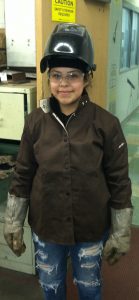
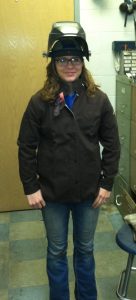
*******************************************************************************
STEM 2015-2016
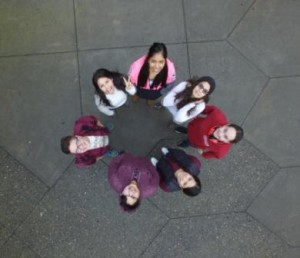
Core Team Members: Mollee Allen, Esmeralda Morelos, Chyenne Bronson, Yurendi Magana, Kimberly Pradia, Makenzie Noggle, and Alissa Smith
Here’s a photo sent by Coach Matthew Campbell. This is the core group of girls. They wanted an aerial photo and the weather finally cooperated. Here it is, taken by a drone!
“It’s been a great season so far. The team has been needing a programmer (difficult to get), and finally recruited one last week. Three other students started and had to leave the team due to sports, etc. The core group of seven is a good team size though” said Coach Campbell.
Click on the link to read a write-up from STEM Liaison, Karen King.
